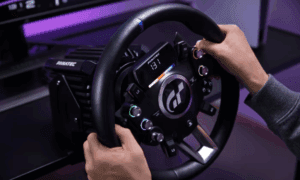Installing an electronic gate opener may improve property value, convenience, and security. This thorough guide will help you know how to install an electric gate opener safely and effectively, whether you’re a do-it-yourself enthusiast or a homeowner seeking direction.
Why Install an Electric Gate Opener?
Before proceeding to the process of installing an electric gate opener, it is vital first to understand the benefits that will be accrued by installation of an automatic gate opener system:
Enhanced Security: An electric gate establishes extra security through warding off unauthorized people.
Convenience: No longer opening the gate out of your car. It is possible to operate the gate while being in your vehicle.
Property Value: You enhance your property’s curb appeal and value by installing an automatic gate opener.
Now, after outlining all of the benefits, let us discuss the electric gate opener installation process.
Tools & Materials Needed
Here’s what you’ll need for installation:
| Tool/Material | Purpose |
| Electric gate opener kit | Consists of the control unit, motor, and accessories. |
| Drill & drill bits | For the mounting holes. |
| Measuring tape & level | Makes sure everything is aligned correctly. |
| Wrench/socket set | Makes nuts and bolts tighter. |
| Power supply & wiring | Supplies power. |
| Concrete mix & post anchors | Keeps posts stable (if necessary). |
| Safety glasses & gloves | Protects while installation is underway. |
| Screws, bolts, and ladder | For access and assembly. |
Once you have these items, you can begin the DIY electric gate opener installation.
Pre-Installation Considerations
Consider these factors before you start the installation to ensure that the process is smooth.
Gate Type: Decide what type of gate – swing, sliding, or some other custom design you have. Electric gate openers are meant to operate with different types of gates.
Gate Weight and Size: Ensure the gate opener you prefer fits well the weight and size of your gate. There are various motors that are designed for different types of gates.
Power Source: Plan for a source of power near the gate. Some openers will need a dedicated circuit.
Remote Control Range: Ensure that your remote-based gate opener will have adequate range for your property.
Step-by-Step Electric Gate Opener Installation Process
Now that we have a basic idea of the benefits of electric gate openers and what you’ll need, let’s examine the process of installing the gates in detail:
Step 1: Select the Best Site for Installation
Prepare your measurements and make a plan of the desired location for your electric gate opener before you begin. You need to think about the following:\
- Gate Size: Get measurements of the gate’s length and height to determine if the automatic gate opener setup will fit in place.
- Power Source: Make sure there is a power source accessible around the installation site.
- Type of Gate: Choose between a sliding or a swinging gate opener since each type of gate opener has different installation needs.
Step 2: Prepare the Site for Installation
Set up the space where the gate opener will be placed first. Ensure that there is sufficient room for the installation of the electric gate motor as well as the ground is level.
Set the Gate’s Position:
- For an accurate fit, measure the width of your driveway or doorway.
- Examine the area around the gate for any obstructions or interference that could be preventing it from moving.
When installing a sliding gate opener, make sure the track is clear of dirt and smooth to allow the gate to move easily.
Step 3: Set Up the Motor for the Gate Opener
It’s time to concentrate on installing the electric gate motor. This is the core of your automated gate system, and its seamless operation depends on its installation.
Mount the Motor: Connect the motor to a reliable wall that is near the gate. Consult the motor’s user manual to know the exact measurements and placement of DIY electric gate opener installation.
Connect the Power Supply: Connect the power supply if the automatic gate requires electrical outlet. Or you might have to install a charging system if the systems run on batteries.
Align the Motor: Ensure that the motor is in line with the movement direction of the gate. This makes the gate opener run smoothly without jamming.
Step 4: Set Up the Control System
You may remotely operate the gate using the control panel that comes with the automated gate opener system. Here is how to install it:
Orient the Control Panel: The control box should be placed near the motor in a convenient location. Securely attach it to a post or a wall.
Connecting the Control Box: Use the proper wires to connect the motor to the control panel. Verify that all cables have been securely attached and shielded from the weather.
Link the remote control: Linking your remote control to the opener requires following the manufacturer’s instructions. By doing this, you will be able to press a button to open and close the gate.
Step 5: Install the Gate and Attach the Opener Mechanism
After installing the motor and control system, attaching the opener mechanism to the gate takes time. This step involves securing the arm or chain that connects the gate to the opener motor.
Attach the Opener Arm: The motor and the gate should have the opener arm firmly fastened to them. To enable smooth movement, make sure it is positioned appropriately.
Test the mechanism: Check to see that the gate and opener line up. Before activating the motor, make any required changes.
Step 6: Turn the system on and test it.
Turn the system on and test it when everything is configured. One of the most essential steps in setting up an electric gate opener system is this one. Turn on the Power: Ensure the power supply is connected correctly. For electric gate opener installation, ensure the system receives power.
- Test the Gate Movement: Use the remote control to open and close the gate. Make sure it moves smoothly and without any obstructions.
- Adjust the Settings: Adjust the motor settings or gate stops according to your preferences if the gate moves too fast or too slow.
Types of Electric Gate Openers
Choose the best gate opener system for your needs before installation:
| Type | Best For | Pros | Cons |
| Sliding Gate Opener | Heavy, wide gates | Handles large gates smoothly | Requires more space for tracks |
| Swing Gate Opener | Hinged gates | Easy installation, cost-effective | Needs strong gate posts |
| Underground Opener | Upscale properties | Hidden mechanism, aesthetic | Expensive, complex installation |
Electric Gate Opener Installation Tips
To ensure your electric gate opener installation goes smoothly, here are some tips:
Use Proper Mounting Hardware: Use the mounting hardware included in your opener kit to ensure stability and durability.
Check Gate Alignment Regularly: Ensure your gate is aligned correctly. Misalignment can cause damage to the opener system.
Maintain the Gate Opener: Clean and lubricate the motor and tracks periodically to prevent wear and tear.
Choose the Right Opener for Your Gate: For sliding gate opener installation, select a motor designed for sliding gates, as they differ from swing gate motors.
Follow Manufacturer Instructions: Always refer to the manufacturer’s manual for specific instructions and wiring diagrams.
Check Gate Weight: Ensure the gate is compatible with the opener regarding weight and size. A gate that is too heavy or large may require a more powerful opener.
Use High-Quality Wiring: Use weatherproof, durable wiring to avoid damage from the elements.
Consider a Professional: If you’re unsure about the electrical connections, consider hiring a professional to handle the wiring part of the electric gate opener installation.
How to Install an Electric Gate Opener Kit
If you’re installing an electric gate opener kit, you’ll have all the necessary components. These kits usually include the opener motor, control unit, arm, and safety sensors. Be sure to carefully read the instructions provided in the kit to ensure proper installation.
Residential Electric Gate Opener Installation
The process for installing an electric gate opener in a residential setting is similar to that for commercial installations but scaled down for smaller, lighter gates. Many homeowners opt for DIY electric gate opener installation for a more cost-effective solution. Making sure the gate opener mechanism fits the weight and kind of your gate is essential.
Common Issues during Electric Gate Installation
Some common issues that people face when installing an electric gate opener system include:
| Issue | Solution |
| The gate won’t open/close | Check power, alignment, or sensor issues. |
| The motor stops working | Inspect wiring and power supply. |
| Slow gate movement | Adjust speed settings or lubricate tracks. |
Conclusion
Putting in an electric gate opener makes your home safer and more convenient. First, you pick where to install electric gate opener, then you set up the motor and control system and make sure everything works. You need the right tools and check that the gate fits the opener. Once it’s all set up, test it to make sure it opens and closes smoothly. Keep it clean and fixed so it lasts longer!
🔹 Pro Tip: Perform regular maintenance (cleaning, lubrication, alignment checks) to extend the system’s lifespan.



































